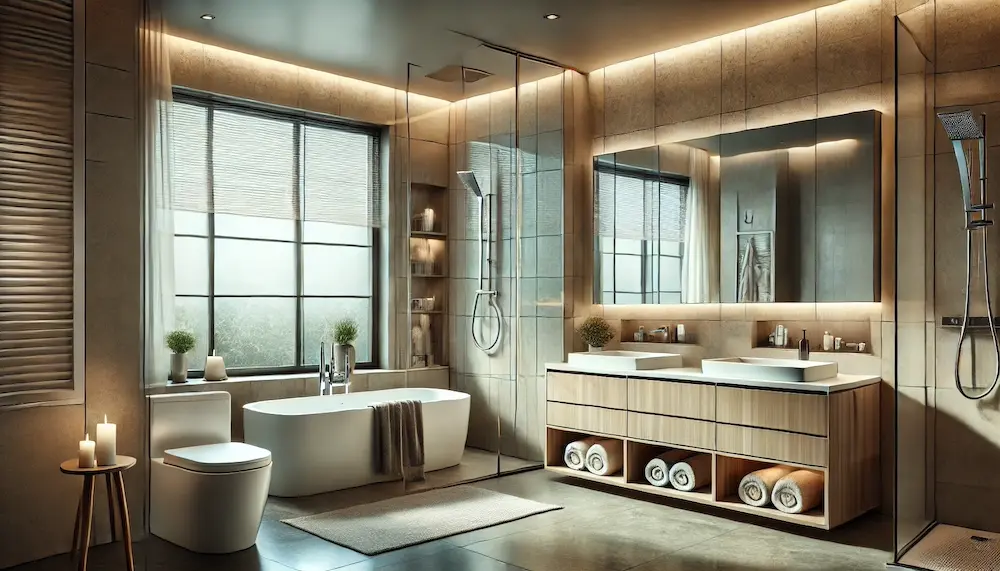Contemporary bathrooms blend functionality with modern aesthetics, creating spaces that are both practical and visually appealing. This article explores the history, key features, applications, considerations, and future trends of contemporary bathroom design.
Introduction to Contemporary Bathrooms
Contemporary bathrooms are characterized by clean lines, minimalist fixtures, and the integration of advanced technologies. They prioritize both utility and comfort, transforming traditional utilitarian spaces into personal retreats. Features such as floating vanities, frameless mirrors, and natural materials like stone and wood are commonly incorporated to create a serene and uncluttered environment.
History and Origins of Contemporary Bathrooms
The evolution of contemporary bathrooms is closely linked to advancements in plumbing and sanitation. In the late 19th and early 20th centuries, the development of indoor plumbing allowed bathrooms to transition from communal spaces to private, in-home facilities. Designers began to view bathrooms as integral parts of living spaces, emphasizing aesthetics alongside functionality.
Key Features of Contemporary Bathrooms
- Minimalist Design: Emphasis on simplicity and uncluttered spaces, often achieved through the use of neutral color palettes and streamlined fixtures.
- Advanced Technology: Integration of smart showers, touchless faucets, and bidet toilets enhances user experience and promotes hygiene.
- Natural Materials: Use of materials like marble, granite, and wood adds warmth and luxury to the space.
- Open Layouts: Designs such as wet rooms, which eliminate the need for separate shower enclosures, create a sense of spaciousness.
Applications of Contemporary Bathrooms
Contemporary bathroom designs are applied in various contexts:
- Residential Spaces: Homeowners adopt contemporary designs to create personal retreats that offer both functionality and relaxation.
- Hospitality Industry: Hotels incorporate contemporary bathroom designs to provide guests with luxurious and spa-like experiences.
- Healthcare Facilities: Contemporary bathrooms in healthcare settings focus on accessibility and hygiene, utilizing touchless fixtures and open layouts to accommodate all users.
Considerations When Choosing Contemporary Bathroom Designs
When planning a contemporary bathroom, consider the following:
- Space Utilization: Optimize the layout to ensure functionality, especially in smaller bathrooms. Features like floating vanities and wall-mounted toilets can save space.
- Material Selection: Choose durable and water-resistant materials that align with the desired aesthetic. Natural stones and high-quality ceramics are popular choices.
- Technological Integration: Ensure that the incorporation of smart technology enhances user experience without complicating usability.
- Budget Constraints: While contemporary designs can be luxurious, it’s important to balance aesthetics with affordability. Invest in quality fixtures where it matters most, such as plumbing and waterproofing, to prevent future issues.
Conclusion
Contemporary bathrooms have transformed from mere functional spaces to essential components of modern living, emphasizing design, comfort, and technology. By understanding their history, key features, and practical applications, one can create a bathroom that is both stylish and functional, catering to the evolving needs of today’s society.
